Mitochondrial DNA Polymorphisms in Carib People of Belize , by M. V. Monsalve; E. HagelbergProceedings: Biological Sciences © 1997 The Royal Society
*Thank you to community member John Ayes for finding this article.
A Syndicated Indigenous News Service dedicated to increasing the visibility of Taino and other Native Peoples from throughout the Caribbean region and the Diaspora in the Spirit of Our Ancestors. CopyRight © 2004-2023, All Rights Reserved


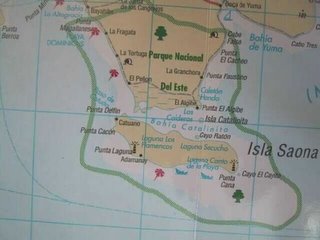



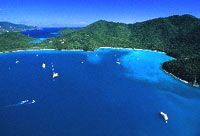 Prinstine Maho Bay, St. John, VI
Prinstine Maho Bay, St. John, VI
St. John, U.S. Virgin Islands - The Trust for Public Land (TPL), a national nonprofit land conservation organization, today announced it has signed a contract to buy and preserve a 415-acre property in the heart of St. John that ultimately will become part of Virgin Islands National Park. It would be the biggest preservation project on St. John since the National Park was created in 1956.
The property, known as Estate Maho Bay, will be added to the park when federal funds become available, said Greg Chelius, director of TPL's program in Florida and the Caribbean.
"The national park on St. John is one of the world's great treasures," said Chelius. "We are very excited to be part of the effort to preserve its incredible natural beauty."
"TPL has been working on preserving Maho Bay for more than five years and while there have been a lot of challenges, it looks like we're finally on the road," Chelius continued. "We have a lot of hurdles to go, and we have to raise millions of dollars to make this happen, but we're confident that Estate Maho Bay will be protected."
The property has more than a quarter-mile of beachfront on pristine Maho Bay and rises to almost 1,000 feet in height. It also has significant ruins from the Danish colonial era, 1700-1860 and may have pre-Columbian cultural resources from the Taino Indian people, who inhabited St. John for 800 years before Christopher Columbus arrived. Just offshore are seagrass beds, green turtles and coral reef systems which are visited by thousands of people every year.
"Protection of this large property by TPL represents a very significant event for the V.I. National Park and for St. John. Development of this watershed would have had considerable impact on the natural and cultural resources of the park as well as residents and visitors to St. John," said Rafe Boulon, native St. Johnian and chief of resource management, V.I. National Park.
TPL has been working for years to acquire the property, which was owned by 11 heirs of Harvey Monroe Marsh. In fact, John Garrison, director of TPL's Southwest Florida Office and lead project manager on this acquisition, was interested in preserving this property before coming to TPL five years ago, when he was director of Friends of the Virgin Islands National Park, a nonprofit on St. John dedicated to protecting the park.
Garrison said that the property has not been subdivided, so that each heir owns 1/11 interest in the entire parcel. Six heirs agreed to sell their interests to TPL. TPL had previously purchased one interest. The NPS owns three interests and the 11th is being retained by one of the heirs. By contract, the purchase price of the six interests is to remain confidential. The heirs are also each retaining a six-acre lot, with the ability to build up to two homes.
"Preservation of this property will be the culmination of many, many years of work," said Garrison. "A lot of credit goes to the heirs, who were willing to work with us and gave us a significant bargain on the sale, as well as to the Friends group for their continued support." A spokesperson for the Marsh family said, "Maho Bay has been in the family for over 100 years so it is important to the family to retain ancestral home sites and at the same time preserve the natural beauty of the estate for future generations to enjoy."
"The preservation of Estate Maho Bay, one of the most popular and cherished areas within VI National Park, is a significant accomplishment that will benefit the people of St. John and all those who will be able to visit and enjoy this magnificent area," said Joe Kessler, president of Friends of Virgin Islands National Park. "The Friends and all those who love VI National Park will be forever grateful to TPL for their persistence and imagination in making this a reality, to the donor for their generosity in financing the acquisition and to the heirs for their foresight and commitment to preserving Estate Maho Bay. We are pleased to have been a part of making this happen."
The Trust for Public Land (TPL) is a national nonprofit land conservation organization that conserves land for people to enjoy as parks, gardens, and natural areas, ensuring livable communities for generations to come. Since its founding in 1972, TPL has helped protect more than 2 million acres of land in 45 states. Working in Florida since 1975, TPL has protected more than 300 sites - over 200,000 acres at a market value of more than $500 million. The Trust for Public Land depends on the support and generosity of individuals, foundations, and businesses to achieve our land for people mission.
Source: Envivonmental News Network http://enn.com
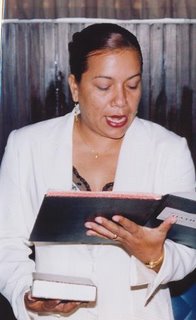
(Jules Gibson photo)
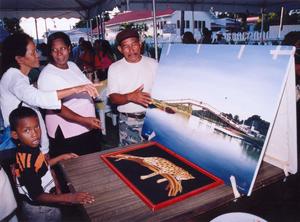
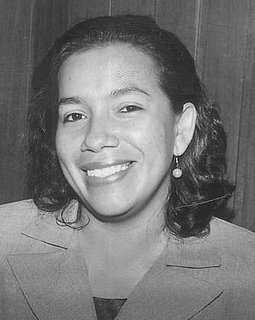
Guyana, South America (UCTP Taino News) - September is designated as `Amerindian Heritage Month'. During Heritage Month, Indigenous Peoples from all around the country will come together to celebrate and showcase their products and resources.
During the month-long commemoration, focus will be on cultural, sports and environmental activities in and out of Amerindian communities. There are 9 different indigenous peoples who have inhabited the land which is known as Guyana for several thousand years.
In 1995, the late President Dr. Cheddi Jagan designated September as Amerindian Heritage Month to showcase and promote Amerindian culture and contributions as Guyanese. The observance in September has received recognition from various Amerindian groups because on September 10, 1957, the first Amerindian Parliamentarian Mr. Stephen Campbell of Santa Rosa, Moruca, was sworn in as a Member of Parliament (MP).
UCTPTN 09.01.2006






